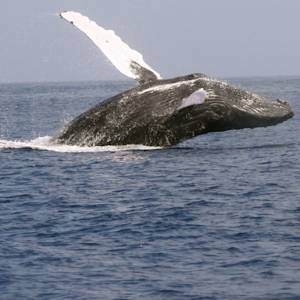Irrawaddy dolphin
2023 CE • Mekong River
"Irrawaddy dolphins were once found throughout the Mekong from the Lao-Cambodia border down the Mekong to the delta in Vietnam and in Tonle Sap. The population and range of the dolphins has declined greatly in the last 39 years . . . The Irrawaddy Dolphin’s habitat preferences for freshwater and near shore marine environments make the species especially vulnerable to intensive human use and abuse . . . Historically, populations were decimated by hunting for meat and oil, accidental drowning in nets, explosives fishing, and even being used as target practice by various armies during Cambodia’s recent troubled periods. Today, accidental drowning in gillnets is the main threat to adult Irrawaddy dolphins in the Mekong, especially with fishing becoming increasing intensive and cheap nylon gillnets replacing thicker traditional nets that could be detected by dolphin echolocation." Due to the devastating threats to the irrawaddy, the species has declined to a mere 89 individuals remaining along the North Eastern Cambodia stretch of the Mekong River.
"The Irrawaddy Dolphin and Mekong River Conservation: Ensuring a Bright Future For Irrawaddy Dolphins in the Mekong River," World Wildlife Fund.
Image: Stefan Brending via Wikimedia Commons


Learn about Maya Lin’s fifth and final memorial: a multi-platform science based artwork that presents an ecological history of our world - past, present, and future.

Discover ecological histories and stories of former abundance, loss, and recovery on the map of memory.

Learn how we can reduce our emissions and protect and restore species and habitats – around the world.

See how art can help us rethink the problems we face, and give us hope that each one of us can make a difference.

Help make a global memorial something personal and close to home. Share your stories of the natural world.


